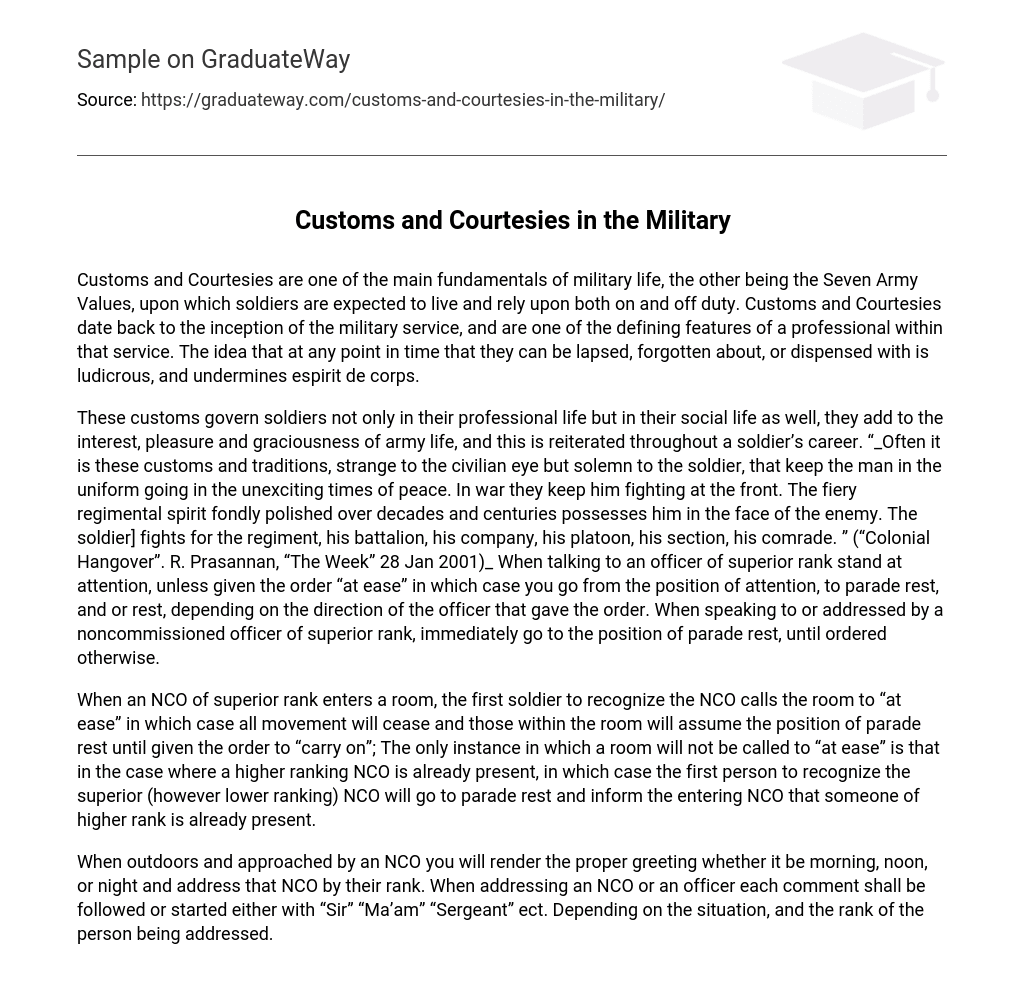Customs and Courtesies, along with the Seven Army Values, are crucial aspects of military life. It is expected that soldiers adhere to these principles on and off duty. These traditions have existed since the establishment of the military and are a key characteristic of professionalism in the service. Disregarding or neglecting them is nonsensical and undermines unity.
These customs not only govern soldiers in their professional life but also in their social life. They contribute to the interest, enjoyment, and elegance of army life, and this is emphasized throughout a soldier’s career. These customs and traditions, which may seem strange to civilians but hold solemn significance for soldiers, are what motivate them during times of peace and keep them fighting at the front during war. The fiery regimental spirit, which has been cherished for decades and centuries, instills in the soldier a sense of belonging and loyalty to their regiment, battalion, company, platoon, section, and comrades. “Colonial Hangover” by R. Prasannan in “The Week” (28 Jan 2001) highlights this. When conversing with a superior officer, soldiers must stand at attention unless instructed otherwise with the command “at ease.” At that point, they transition from the position of attention to parade rest or rest depending on the officer’s direction. When speaking to or addressed by a noncommissioned officer of higher rank, immediate assumption of the parade rest position is required unless instructed otherwise.
When a higher-ranking NCO enters a room, the first soldier to notice them calls for the room to go into “at ease.” This means that all movement stops and everyone in the room assumes the position of parade rest until told to resume. The only exception to calling the room to “at ease” is when a higher-ranking NCO is already present. In that case, the first person to notice the superior NCO, regardless of their lower rank, will go into parade rest and inform the entering NCO that someone of higher rank is already there.
When outdoors, it is crucial to respectfully greet and address an NCO by their rank, regardless of the time. Furthermore, when conversing with an NCO or officer, it is important to use their proper title such as “Sir,” “Ma’am,” or “Sergeant” at the start or end of each statement. The specific title employed varies based on the situation and rank of the individual being spoken to.





